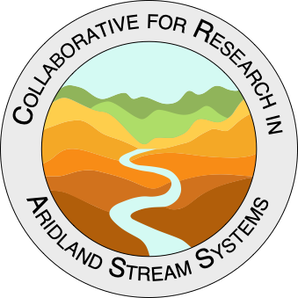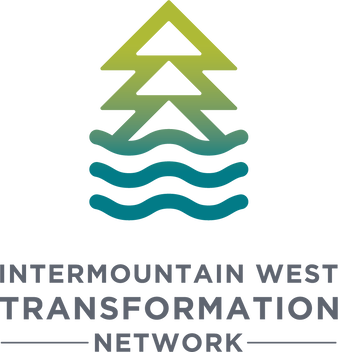|
Quantifying Ecosystem exports across Space and Time
Media Coverage Small headwater streams, encompassing 80% of Earth's river miles, serve as vital conduits for water and materials into aquatic ecosystems. Headwater stream networks dynamically expand and contract in response to precipitation inputs and periods of drought. Climate-induced alterations in these dynamics hold the potential to reshape the downstream export of water, carbon, solutes, and sediment. Our collaborative project integrates hydrologic modeling and a biogeochemical observation network spanning the continental US's gradient of precipitation regimes to understand the repercussions of changing expansion and contraction dynamics on downstream water quantity and quality. This endeavor not only sheds light on the resilience of headwater ecosystems but also bolsters our capacity to predict and manage water quality, quantity, and ecosystem responses. The QuEST project is led by the Webster Lab in partnership with the ECOSHEDS lab, Shogren Lab, Blaszczak Lab, Speir Lab, and HyDROS Lab, and is in close collaboration with Oak Ridge National Laboratory's WaDE project, Dustin Kincaid, and Hannah Fazekas. Funding is provided by the U.S. Department of Energy's Established Program to Stimulate Competitive Research. Water Quality Responses to Prescribed Fire
We are hiring for a Research Scientist 2 Staff position for this project! Applications are due July 15, 2024. See Join Us page for details. This project, funded by the Joint Fire Science Program, aims to address water management challenges resulting from fire exclusion in western US conifer forests and interactions with climate change. With increasing wildfire size and severity due to increasing aridity and fuel build-up, prescribed fire usage for forest restoration has risen. While prescribed fires have clear ecological benefits, concerns remain about potential tradeoffs with water quality. This project will study water quality responses to prescribed fire in two headwater watersheds within the Teakettle Experimental Forest in California, with approaches aimed at addressing key management-relevant sources of uncertainty in how fire impacts stream chemistry. This research is in collaboration with the Hurteau Lab. Collaborative for Research in Aridland Stream Systems
The Collaborative for Research in Aridland Stream Systems (CRASS) is a working group of aridland stream ecologists, hydrologists, climate scientists, and statisticians using long-term and broad-scale aridland stream data to evaluate stream ecosystem models with an emphasis on aridland stream responses to climate change. The Webster Lab is co-leading a data synthesis designed to understand the impact of wildfires on aridland water quality across hydroclimate gradients. This initiative is in collaboration with the Grimm Lab, the Harms Lab, and others. Publications:
|
The Transformation Network was formed in 2021 with an award from the NSF Sustainable Regional Systems Program. We aim to build resilient communities and ecosystems throughout the Intermountain Western United States through research and collaboration among eight universities and over 50 partner organizations representing Tribal partners, governmental and non-governmental organizations, public utilities, conservation districts, irrigation districts, and municipalities. The Webster Lab is directing our research program in the Upper Rio Grande Fireshed, which is providing a case study for understanding the resilience and transformative capacity of headwater-depended social-ecological-technological systems. Publications:
The Sevilleta Long-Term Ecological Research (LTER) Program
The Sevilleta Long-Term Ecological Research (LTER) program is a Long-Term Ecological Research program in New Mexico that expands our understanding of biological processes in aridlands. We are addressing big questions in ecology, centered on environmental variability. The fluctuating nature of aridlands makes them excellent study systems to improve general understanding of the biological consequences of environmental variability. The Webster Lab is partnering with the Bosque Ecosystem Monitoring Program (BEMP), the Repasch Lab, and the Litvak Lab to lead work in the Rio Grande's riparian floodplain as one of six aridland ecosystems studied at the Sevilleta LTER. BEMP has been collecting data on the Rio Grande's riparian ecosystem for 26 years, primarily through community science partnerships with K-12 students and their teachers. The Webster Lab is leading the development of new longterm datasets that track carbon cycling in this important ecosystem and how it is impacted by groundwater variability, river regulation, and ecosystem management. The Concentration-Discharge Research Network
The shape of the relationship between solute concentration (C) and flow (Q) in streams and rivers (C-Q relationships) can reveal important characteristics about a watershed and how it responds to disturbance and long-term change. C-Q science is advancing rapidly thanks to increasing use of high-frequency sensors and new quantitative tools. The C-Q Network is a group of early career catchment scientists working to synthesize the current state of C-Q science and provide new quantitative tools to push this science forward. This effort is a collaboration between the Webster Lab, the ECOSHEDS lab, the Shogren Lab, the Blaszczak Lab, the Speir Lab, the Rose Lab, Dustin Kincaid, Hannah Fazekas, and others. Publications:
|






